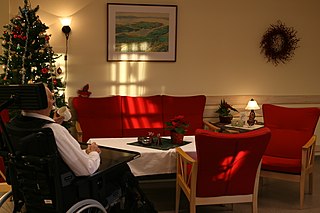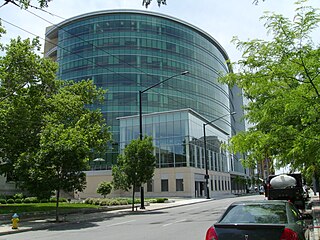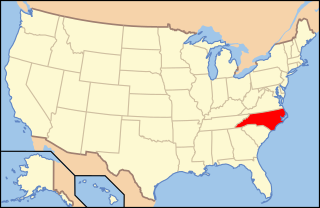The term managed care or managed healthcare is used in the United States to describe a group of activities intended to reduce the cost of providing health care and providing American health insurance while improving the quality of that care. It has become the predominant system of delivering and receiving American health care since its implementation in the early 1980s, and has been largely unaffected by the Affordable Care Act of 2010.
...intended to reduce unnecessary health care costs through a variety of mechanisms, including: economic incentives for physicians and patients to select less costly forms of care; programs for reviewing the medical necessity of specific services; increased beneficiary cost sharing; controls on inpatient admissions and lengths of stay; the establishment of cost-sharing incentives for outpatient surgery; selective contracting with health care providers; and the intensive management of high-cost health care cases. The programs may be provided in a variety of settings, such as Health Maintenance Organizations and Preferred Provider Organizations.

Long-term care (LTC) is a variety of services which help meet both the medical and non-medical needs of people with a chronic illness or disability who cannot care for themselves for long periods. Long-term care is focused on individualized and coordinated services that promote independence, maximize patients' quality of life, and meet patients' needs over a period of time.
The California Medical Assistance Program is the California implementation of the federal Medicaid program serving low-income individuals, including families, seniors, persons with disabilities, children in foster care, pregnant women, and childless adults with incomes below 138% of federal poverty level. Benefits include ambulatory patient services, emergency services, hospitalization, maternity and newborn care, mental health and substance use disorder treatment, dental (Denti-Cal), vision, and long-term care and support. Medi-Cal was created in 1965 by the California Medical Assistance Program a few months after the national legislation was passed. Approximately 15.28 million people were enrolled in Medi-Cal as of September 2022, or about 40% of California's population; in most counties, more than half of eligible residents were enrolled as of 2020.
A group home, congregate living facility, care home, adult family home, etc., is a structured and supervised residence model that provides assisted living and medical care for those with complex health needs. Traditionally, the model has been used for children or young people who cannot live with their families or afford their own homes, people with chronic disabilities who may be adults or seniors, or people with dementia and related aged illnesses. Typically, there are no more than six residents, and there is at least one trained caregiver there 24 hours a day. In some early "model programs", a house manager, night manager, weekend activity coordinator, and four part-time skill teachers were reported. Originally, the term group home referred to homes of 8 to 16 individuals, which was a state-mandated size during deinstitutionalization. Residential nursing facilities, also included in this article, may be as large as 100 individuals in 2015, which is no longer the case in fields such as intellectual and developmental disabilities. Depending on the severity of the condition requiring one to need to live in a group home, some clients are able to attend day programs and most clients are able to live normal lifestyles.
In the United States, health insurance helps pay for medical expenses through privately purchased insurance, social insurance, or a social welfare program funded by the government. Synonyms for this usage include "health coverage", "health care coverage", and "health benefits". In a more technical sense, the term "health insurance" is used to describe any form of insurance providing protection against the costs of medical services. This usage includes both private insurance programs and social insurance programs such as Medicare, which pools resources and spreads the financial risk associated with major medical expenses across the entire population to protect everyone, as well as social welfare programs like Medicaid and the Children's Health Insurance Program, which both provide assistance to people who cannot afford health coverage.
The Ohio Department of Aging is the administrative department of the Ohio state government responsible for delivery of services and support that improves and promotes quality of life and personal choice for older Ohioans, adults with disabilities, their families and their caregivers. The director of the department is the chief advisor to the Governor concerning issues affecting older Ohioans and policy changes at the federal Administration on Aging.

CareSource is a nonprofit that began as a managed health care plan serving Medicaid members in Ohio. Today, it provides public health care programs including Medicaid, Medicare, and Marketplace. The company is headquartered in Dayton, Ohio. It is the largest Medicaid plan in Ohio and is second largest in the United States.

SCAN Health Plan (SCAN) is a not-for-profit, Medicare Advantage based in Long Beach, California. Founded in 1977, SCAN provides healthcare coverage to Medicare beneficiaries in California, Arizona, Texas and Nevada, serving more than 285,000 members. It is one of the largest not-for-profit Medicare Advantage plans in the country. SCAN Health Plan is part of SCAN Group. In 2022, SCAN and CareOregon announced their intention to combine and form a non-profit healthcare organization under the name HealthRight Group.
Medicaid managed care Medicaid and additional services in the United States through an arrangement between a state Medicaid agency and managed care organizations (MCOs) that accept a set payment – "capitation" – for these services. As of 2014, 26 states have contracts with MCOs to deliver long-term care for the elderly and individuals with disabilities. There are two main forms of Medicaid managed care, "risk-based MCOs" and "primary care case management (PCCM)."
The Association for Community Affiliated Plans (ACAP) is a national trade association representing 80 nonprofit health plans. Headquartered in Washington, D.C., ACAP advocates on behalf of its community-affiliated member health plans operating throughout the United States. ACAP's advocacy work focuses on representing publicly sponsored programs and health care providers who serve vulnerable populations. ACAP also promotes universal access to quality and cost-efficient care.
Intermediate Care Facilities for Individuals with Intellectual Disabilities (ICF/IID), formerly known as Intermediate Care Facilities for Mental Retardation (ICF/MR), is an American Medicaid-funded institutional long-term support and service (LTSS) for people with intellectual disabilities or related conditions. Section 1905(d) of the Social Security Act enacted benefits and made funding available for "institutions" for individuals with intellectual or related conditions. According to federal law 42 CFR § 440.150 the purpose of ICD/IIDs is to "furnish health or rehabilitative services to persons with Intellectual Disability or persons with related conditions."
Primary Care Case Management (PCCM), is a program of the United States government healthcare service Medicaid. It oversees the United States system of managed care used by state Medicaid agencies in which a primary care provider is responsible for approving and monitoring the care of enrolled Medicaid beneficiaries, typically for a small monthly case management fee in addition to fee-for-service reimbursement for treatment. In the mid-1980s, states began enrolling beneficiaries in their PCCM programs in an attempt to increase access and reduce inappropriate emergency department and other high cost care. Use increased steadily through the 1990s.
Primary Care Case Management (PCCM) is a system of managed care in the US used by state Medicaid agencies, in which a primary care provider is responsible for approving and monitoring the care of enrolled Medicaid beneficiaries, typically for a small monthly case management fee in addition to fee-for-service reimbursement for treatment. In the mid-1980s, states began enrolling beneficiaries in their PCCM programs in an attempt to increase access and reduce inappropriate emergency department and other high cost care. Use increased steadily through the 1990s.

The state of North Carolina is undertaking a comprehensive policy shift on how the government budgets for and manages resources for mental health, developmental disability, and substance abuse services. The 1915 (b)(c) Medicaid Waiver Program was chosen by the North Carolina Department of Health & Human Services, Division of Medical Assistance as a way to control and more accurately budget for the rising costs of Medicaid funded services. The 1915 (b)(c) Waiver Program was initially implemented at one pilot site in 2005 and evaluated for several years. Two expansion sites were then added in 2012. Full statewide implementation is expected by July 1, 2013.
Healthy Way LA (HWLA) was a free public health care program available to underinsured or uninsured, low-income residents of Los Angeles County. The program, administered by the Los Angeles County Department of Health Services, was a Low Income Health Program (LIHP) approved under the 1115 Waiver. HWLA helped to narrow the large gap in access to health care among low-income populations by extending health care insurance to uninsured LA County residents living at 0 percent to 133 percent of the Federal Poverty Level (FPL). Individuals eligible for HWLA were assigned to a medical home within the LA County Department of Health Services (LADHS) or its partners, thus gaining access to continuous primary care, preventive and specialty services, mental health services, and other support systems. HWLA was one of the few sources of coordinated health care for disadvantaged adults without dependents in LA County. HWLA was succeeded by My Health LA, a no-cost health care program for low-income Los Angeles County residents launched on October 1, 2014.
The 340B Drug Pricing Program is a US federal government program created in 1992 that requires drug manufacturers to provide outpatient drugs to eligible health care organizations and covered entities at significantly reduced prices. The intent of the program is to allow covered entities to "stretch scarce federal resources as far as possible, reaching more eligible patients and providing more comprehensive services." Maintaining services and lowering medication costs for patients is consistent with the purpose of the program, which is named for the section authorizing it in the Public Health Service Act (PHSA) It was enacted by Congress as part of a larger bill signed into law by President George H. W. Bush.
The Utah HCBS waiver program is a state-run program that serves individuals in Utah with intellectual disabilities or related conditions (ID/RC). HCBS stands for Home and Community-Based Services.
Medicaid Waiver programs help provide services to people who would otherwise be in an institution, nursing home, or hospital to receive long-term care in the community. Prior to 1991, the Federal Medicaid program paid for services only if a person lived in an institution. The approval of Federal Medicaid Waiver programs allowed states to provide services to consumers in their homes and in their communities.
Patient navigators educate and assist United States citizens in enrolling into health benefit plans stipulated in the Patient Protection and Affordable Care Act (ACA). Patient navigators are also called "insurance navigators" or "in-person assisters" who have defined roles under the ACA. Although their roles might overlap, patient navigators are not community health workers or health advocates. "Navigators" work in states with Federally-Facilitated Exchanges (FFEs) or State Partnership Exchanges.
As of 2017, approximately 1.4 million Americans live in a nursing home, two-thirds of whom rely on Medicaid to pay for their care. Residential nursing facilities receive Medicaid federal funding and approvals through a state health department. These facilities may be overseen by various types of state agency.



